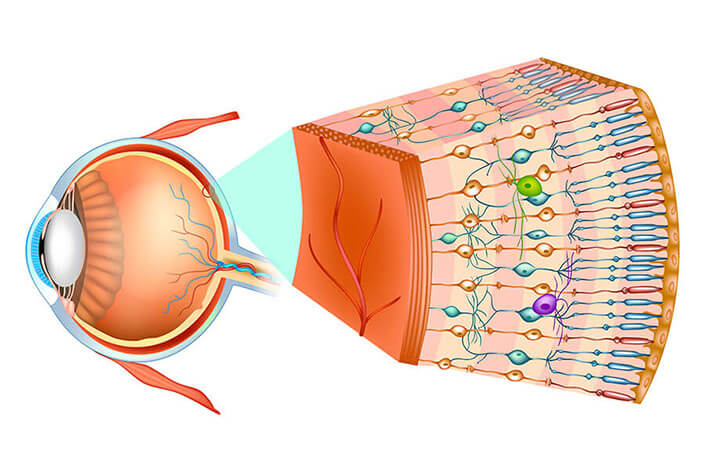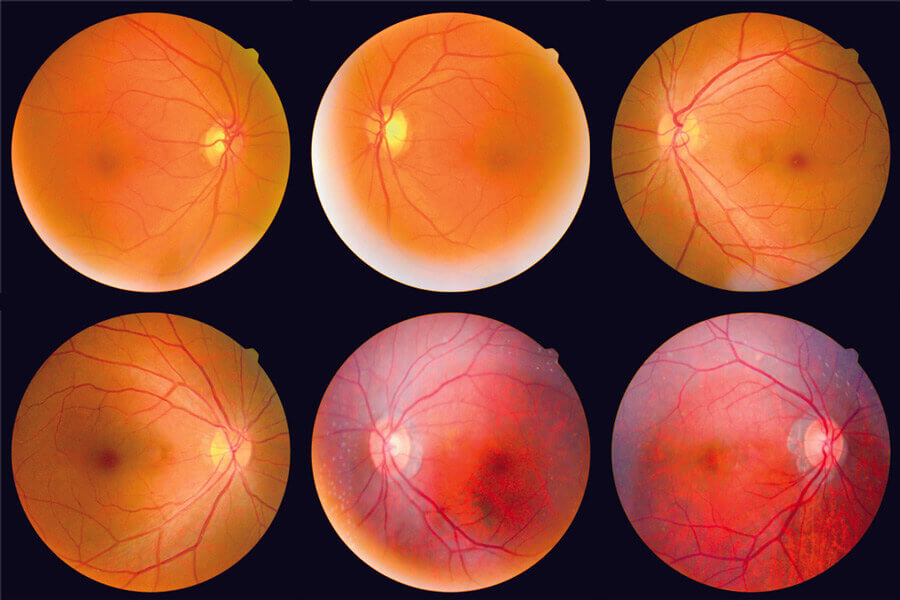What is the retina?
The retina is a thin, light-sensitive layer of tissue that covers the back of the eye. When light hits the retina after refracting through the cornea and lens, the photoreceptor cells in the retina receive impulses that are sent from the optic nerve to the brain. In general, the retina is responsible for processing the light that passes through the eye and translating it into images that our brain can understand.
Why is retinal health so important?
The retina is crucial in sending visual information to the brain — any damage to the retina can make it harder to see or cause permanent blindness.
Who is at risk for retinal damage?
The most at-risk patients for retinal damage are individuals age 50 and up. By the time you reach 50, you should schedule an eye exam at least once every year. It’s possible, however, to be a high-risk patient even if you aren’t 50. For example, if you have diabetes, you may be at high-risk for retinal damage at a younger age. In general, your doctor can tell you when the best time is to start having regular exams.
How is retinal damage diagnosed?
Standard comprehensive eye exams can be helpful in detecting retinal damage as they include a retinal exam. A retinal exam involves dilating the pupils, so your doctor has a clear view of your retina. In recent years, taking pictures of the retina with specialized equipment has become a more common practice.
For patients at high-risk, however, the preferred method for retinal exams is Ocular Coherence Tomography (OCT). OCT uses a special kind of scanner that employs infrared technology to provide detailed images of the retina.
Because of how detailed OCT can be, the images it produces are able to detect retinal damage in far earlier stages than standard retinal exams. Early detection is very important for retinal conditions since damage to the retina is irreversible.
What are the most common retinal conditions?
There are many conditions that can damage the retina, but the primary conditions that are linked to retinal damage include:
Macular Degeneration
The macula is located in the center of the retina and is responsible for central vision. Macular degeneration is the breakdown of the photoreceptor cells in the macula, which causes the patient to gradually lose their central vision. The primary cause of macular degeneration is aging.
Floaters
Floaters and flashers appear as dots or specks in the visual field. They are often the result of the vitreous, a gel that fills the eye, becoming more liquid with age. While floaters are usually harmless, they can also indicate a more serious condition such as a retinal tear or detachment.
Retinal Tear or Detachment
Part or all of the retina can become detached from the back of the eye as a result of the vitreous shrinking and pulling the retina along with it. The retina can also tear due to the pressure of this pulling. Retinal tears and detachments are considered a medical emergency and can cause total blindness if not immediately treated.
Diabetic Retinopathy
Diabetic retinopathy refers to damage done to the retina in patients with diabetes. High blood sugar can make the blood vessels in the retina swell and leak blood, which can cause irreversible damage to the retina.
How are retinal conditions treated?
There are many methods of treatment for retinal conditions, both surgical and otherwise. These treatments include:
Retina Treatment, Melbourne, FL
At Rosanova Eye, our team of ophthalmology specialists can diagnose retinal conditions and recommend a treatment plan. Contact us today to review your options for retina treatment in Melbourne, FL.




